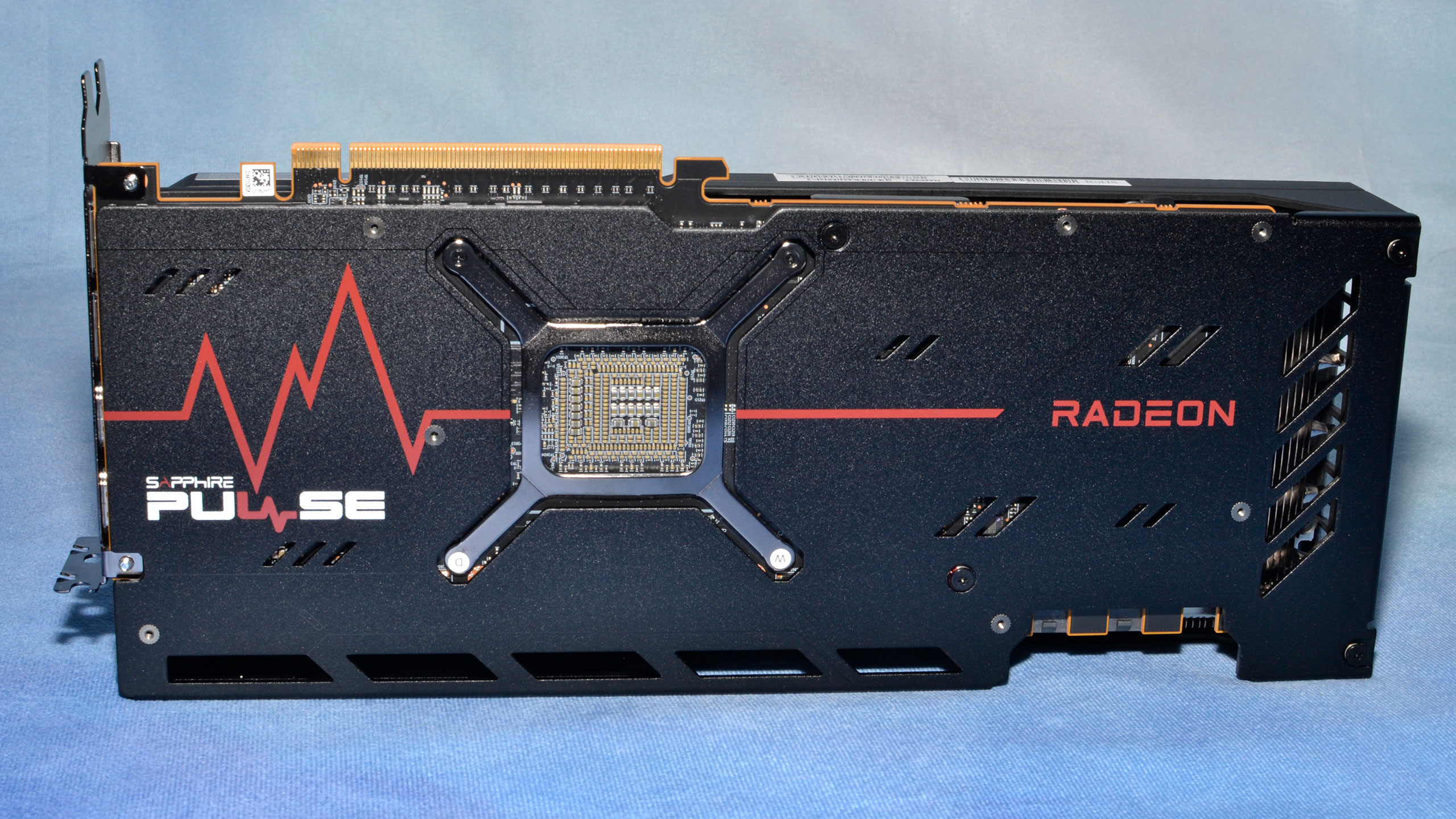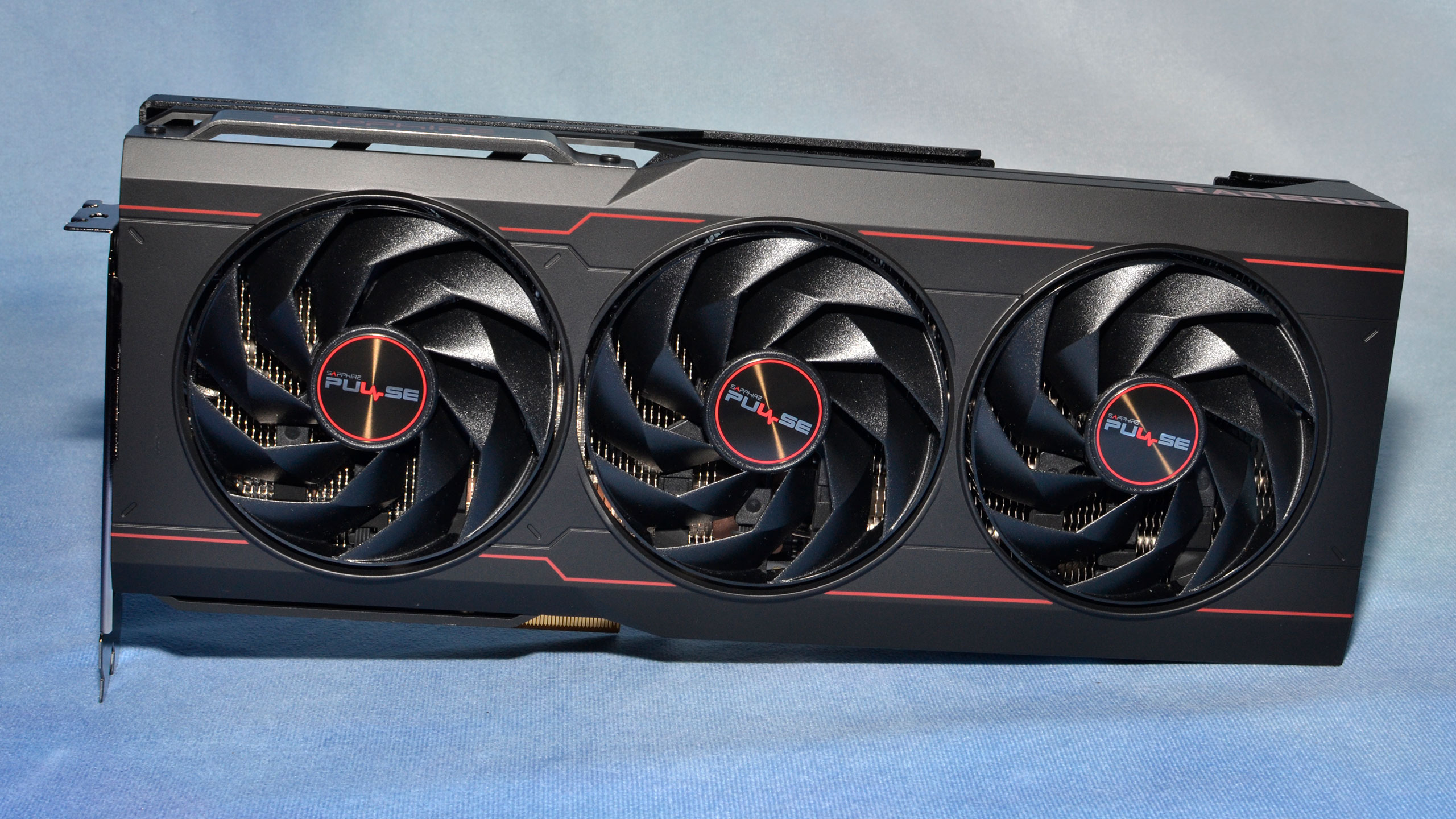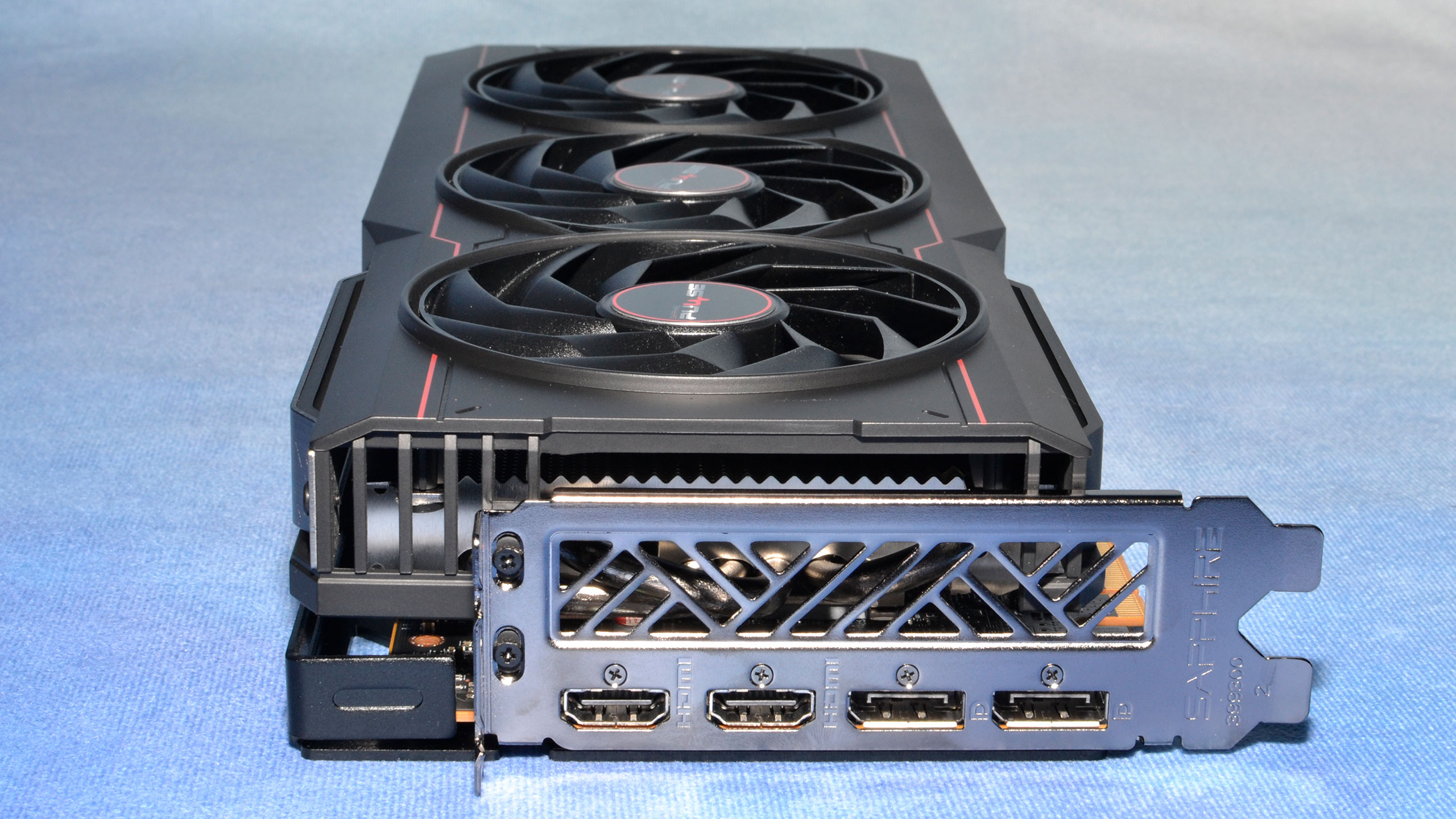Why you can trust Tom's Hardware
The Sapphire RX 7900 XT Pulse is a bit of a curiosity, as far as our test results go. On paper, it should be faster than the reference 7900 XT. Other sites show it as being a few percent faster. Our particular sample, though? Not quite so great, with higher power draw and at best equivalent performance. We suspect most Pulse cards will fare slightly better, as it's a bit surprising that the card didn't clearly beat the reference design in performance.
It also used about 5% more power on average while delivering equivalent performance, and temperatures were a few degrees Celsius higher under load. But the good news is that the fans and cooling are clearly superior, with noise levels peaking at 40 dB(A) compared to the reference card that gets noticeably louder at 49 dB(A).
If you're looking for an inexpensive RX 7900 XT and you don't care about RGB lighting or flashy designs, the Sapphire Pulse is a great option. If you prefer something with more bling, the ASRock Phantom Gaming OC has some RGB to brighten your day, for the same $779 asking price. And that's probably the best news overall: RX 7900 XT cards can now be had for $120 less than the original (too high) launch MSRP.
That price change was pretty much required, as performance in general ends up being roughly equivalent to the RTX 4070 Ti. Rasterized performance at native rendering is faster, but ray tracing is slower, and DLSS still provides better quality upscaling, in more games, than FSR 2.

AMD does provide you with a lot more VRAM, 20GB versus Nvidia's competing card with just 12GB. If you're worried about games starting to push into requiring 16GB or more VRAM, it's potentially a safer bet. Or you can just recognize that HD texture packs often do very little for image fidelity and stick with settings that won't exceed 12GB (unless a game is poorly coded, which unfortunately seems to be the case with a lot of recent ports).
Which of these high-end cards ends up being the better pick will ultimately come down to the games you want to play, and what settings you want to use. If you want all the bells and whistles turned on, you might think that the 20GB VRAM trumps 12GB, and it does in some cases. But then you also have to consider that ray tracing will almost always favor Nvidia's RTX 4070 Ti, sometimes by a lot, even if it doesn't have as much VRAM.
We're also still waiting for AMD's lower cost RX 7800 XT and RX 7700 XT GPUs to launch. That will likely happen in the next month or two, though we're not sure on pricing just yet. We're also not sure where performance will land, and it could end up that a $600 RX 7800 XT will only roughly match the existing $600-ish RX 6950 XT.
This generation of GPUs increasingly feels like a step sideways from AMD, moving to GPU chiplets and prepping for future generation architectures while cutting costs, rather than a significant step forward in performance. Yes, the top RX 7900 XTX and 7900 XT are faster than the previous generation, but we could see diminishing gains further down the RX 7000-series product stack.
For top-shelf performance from AMD, the RX 7900 XTX can still beat the RX 7900 XT by 18% at 4K ultra. That's a pretty big jump, accompanied by a 21% increase in price (for the least expensive cards right now). The Sapphire RX 7900 XT Pulse meanwhile also beats the previous generation RX 6950 XT by 20% at 4K, for a 31% increase in price (using current online prices). Prices are fluctuating quite a lot right now, likely due to the impending Navi 32 launch, so keep that in mind.
The Sapphire RX 7900 XT ultimately ends up as a fine option for those shopping in the upper range of AMD GPUs. It's not exceptional, but it's better than some of the other alternatives, depending on your perspective. If you're planning to sit this generation out, it will probably be another 16–18 months before we start seeing the next generation GPUs that might have something more to say about performance, hopefully at better prices (though we wouldn't count on that).
- MORE: Best Graphics Cards
- MORE: GPU Benchmarks and Hierarchy
- MORE: All Graphics Content
Get Tom's Hardware's best news and in-depth reviews, straight to your inbox.
Current page: Sapphire RX 7900 XT: Sounds Good
Prev Page Sapphire RX 7900 XT: Power, Clocks, Temps, and Noise
Jarred Walton is a senior editor at Tom's Hardware focusing on everything GPU. He has been working as a tech journalist since 2004, writing for AnandTech, Maximum PC, and PC Gamer. From the first S3 Virge '3D decelerators' to today's GPUs, Jarred keeps up with all the latest graphics trends and is the one to ask about game performance.
-
Makaveli I have to agree only the Highend options from both NV and AMD this gen are worth it. Anything below 4080,4090 and 7900XT,7900XTX just looks like trash.Reply -
Alvar "Miles" Udell ReplyOr you can just recognize that HD texture packs often do very little for image fidelity and stick with settings that won't exceed 12GB (unless a game is poorly coded, which unfortunately seems to be the case with a lot of recent ports).
With that attitude you don't need to buy a higher end GPU, just buy a console for much less than $600! -
-Fran- Reply
This is actually a fair take. We're not talking about pennies here. These cards are mega expensive and saying "just compromise" feels wrong to say.Alvar Miles Udell said:With that attitude you don't need to buy a higher end GPU, just buy a console for much less than $600!
I mean, people that buys a Ferrari Enzo won't use it* to haul big cargo or for off-road, but the cards above $300 start nudging the "if you need to compromise, just get a console" lever to me.
As for the rest of the review, thanks for it. This card is a tad underrated as "cheap non-reference" cards go. The XTX version of this is same price as reference and a tad better (both come with the 3 8pin so you can OC it IIRC), so you can give them a good run for the money if you want. Also, they're better for Water Cooling enthusiasts as they keep the 3 8pin and aren't as expensive as the higher end cooled ones.
Everything else is: "this is a 7900XT", haha.
I wish you could give VR games a quick try and comparison, since friends with these are crying when I tell them my 6900XT is performing better at lower power than theirs.
Regards. -
Alvar "Miles" Udell ReplyThis is actually a fair take. We're not talking about pennies here. These cards are mega expensive and saying "just compromise" feels wrong to say.
That's what I was going for. Mainstream and entry level cards have compromises, high end designated cards should only have ray tracing as their compromise (and that's not much of one in many cases).
I also don't agree with TH's testing methodology here of requiring the use of ray tracing, since that is one area that usually brings a significant performance detriment for very little actual visual gain. In my opinion ray tracing shouldn't even be counted as a detail for the purposes of defining "max details", but a processing enhancement effect. Techpowerup's review did not use ray tracing for their average FPS chart (it's in a separate chart). They used 25 games, and some were not included from TH's choices, but it provides a far better real-world result. I hope TH will adopt a policy that will require all GPU tests to be run without RT, and if RT is to be included it should be placed in a separate chart, at least until such time when RT does not carry any more than a 10% reduction in performance.
-
JarredWaltonGPU Reply
If we're going down that road, we shouldn't even test at ultra settings, we should just run everything at medium or high. And for those games that actually have ultra settings that actually do look better? Those are just "processing enhancement effects." We should also just test at 1080p, because 1440p and 4K are "resolution enhancement effects." Or put more bluntly, discounting a chunk of what modern GPUs can do just because you don't like how it impacts GPU rankings isn't something I condone or intend to do.Alvar Miles Udell said:That's what I was going for. Mainstream and entry level cards have compromises, high end designated cards should only have ray tracing as their compromise (and that's not much of one in many cases).
I also don't agree with TH's testing methodology here of requiring the use of ray tracing, since that is one area that usually brings a significant performance detriment for very little actual visual gain. In my opinion ray tracing shouldn't even be counted as a detail for the purposes of defining "max details", but a processing enhancement effect.
You'll note in the articles where I look at new games, the conclusion is often (though not always) that ultra and high are basically equivalent quality but ultra requires more GPU resources for minimal gains. Ray tracing, at least in some games, actually does way more than the minor differences between high and ultra. Weakly/poorly done RT of course doesn't do much. So games like Far Cry 6, World of Warcraft, Shadow of the Tomb Raider, Dirt 5, etc. But when it's actually used more extensively, it can make a bigger difference, like Minecraft, Cyberpunk 2077, and a few other games.
If you're willing to discount ray tracing hardware entirely, you can discount a lot of other stuff as well and end up with consoles. But if you're willing to compromise on ray tracing just because it's an area where AMD GPUs in particular perform much worse than their Nvidia counterparts, that's just intentionally limiting your view of a graphics card to favor one brand. -
Makaveli Reply
What is the difference in price?gg83 said:Whats better the 6950xt for $600 or the 7900xt on-sale? -
sherhi Reply
People have different opinions about visuals but these cards are usually within margin of error of reference models, this test shows it as well. Im sure they can make just a rasterization chart for you personally if you are interested in this model but again I bet its within margin of error of reference model and you can always check that here: https://www.tomshardware.com/reviews/gpu-hierarchy,4388.htmlAlvar Miles Udell said:I also don't agree with TH's testing methodology here of requiring the use of ray tracing, since that is one area that usually brings a significant performance detriment for very little actual visual gain. In my opinion...
Its standard these days to separate those measurements. In this article I dont see 1080p and I am okay with that, its high end GPU and if its good at 1440p then I dont really need another page or two (which takes maybe even an hour or two to write) for 1080p because it wont say much.
I agree, is there any online chart comparing same games´performance of all modern GPUs and consoles? I know digital foundry is doing comparisons like PS5 vs Series X vs high end PC but mixing consoles´FPS into these GPU charts would be interesting.Alvar Miles Udell said:With that attitude you don't need to buy a higher end GPU, just buy a console for much less than $600!
I get your point but its not the best example, resolutions are standardized and its common for GPUs to behave differently, their power curve is often non-linear across resolutions...anyway RT should stay thats for sure.JarredWaltonGPU said:If we're going down that road, we shouldn't even test at ultra settings, we should just run everything at medium or high. And for those games that actually have ultra settings that actually do look better? Those are just "processing enhancement effects." We should also just test at 1080p, because 1440p and 4K are "resolution enhancement effects."

